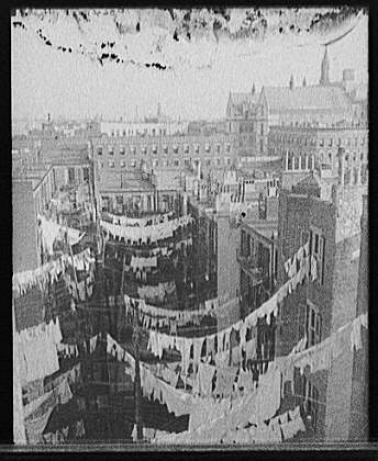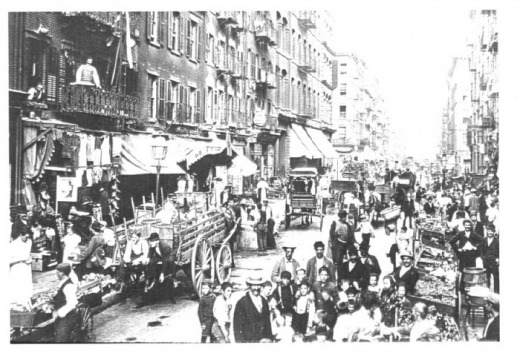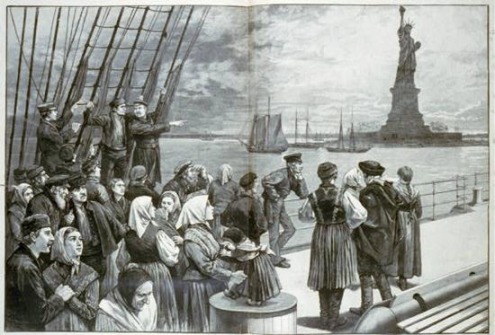Why They Left Home

The late nineteenth century America was seen as the land of opportunity and New York City as the gateway. After the unification of the United States at the end of the civil war in 1865, through foreign eyes America began to emerge as a country where discrimination was intolerable and freedom was promised to all who entered. As the United States economy grew, other countries economies weakened. Many European countries suffered from economic hardship. Crop failure, resulted in loss of jobs and famine. Although poverty became a problem in Europe which helped fuel the mass migration, it was not the only obstacle Europeans faced.

Religious and political freedom were two of the reasons for the colonization of the New World In the late nineteenth century religious and political freedom were once again a factor in a migration of millions. Italy was one of the countries that lacked religious freedom. The ruling Catholic church imposed their beliefs on all Italians, creating the desire for religious autonomy. New York City was a haven for all people from all religions and all nationalities. The instability of the Italian government and the fear of being ruled by Spanish, Austrian rules caused Italians to flee, many of who later replaced Irish in laborer jobs. Similar to the Italians, were the Eastern Europeans who also had a shortage of jobs due to the Industrial Revolution.

New York City was home to Ellis Island, the location in which immigrants were to be processed for clearance to enter the country. Living in New York City provided work and accessibility to ports. In time the city provided the opportunity for immigrant’s to build communities with people from their country of origin Immigrants were categorized as new and old immigrants. Old immigrants included Germans, Irish and, English. The new immigrants included those from Italy, Russia, Poland and Austria- Hungary. In 1875, the New York City population was a small 1 million people compared to the 3,5 million it held at the turn of the century in 1900, 1.3 million which were foreign born. However, not all immigrants who entered the country remained. There were many cases when immigrants settled for just enough time to earn and save money and return to their homeland. This caused anger toward those immigrants who lived the “American Dream”, only to return with American made money to their homelands .
Novotny,Ann. Strangers at the Door. Riverside, CT: The Chatam Press, 1971.
Handlin,Oscar. A Pictorial History of Immigration. New York, NY: Crown Publishers, Inc, 1972.
